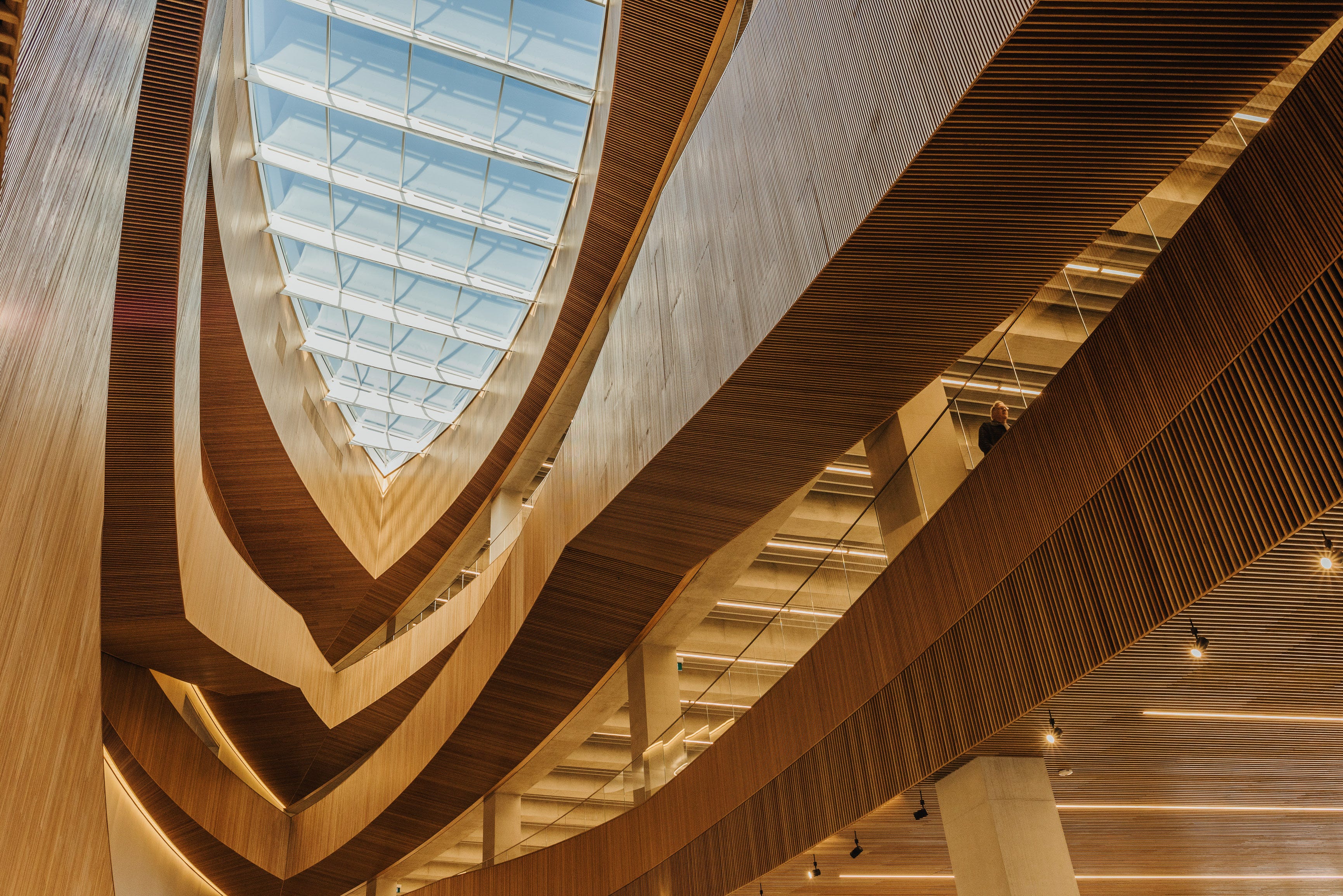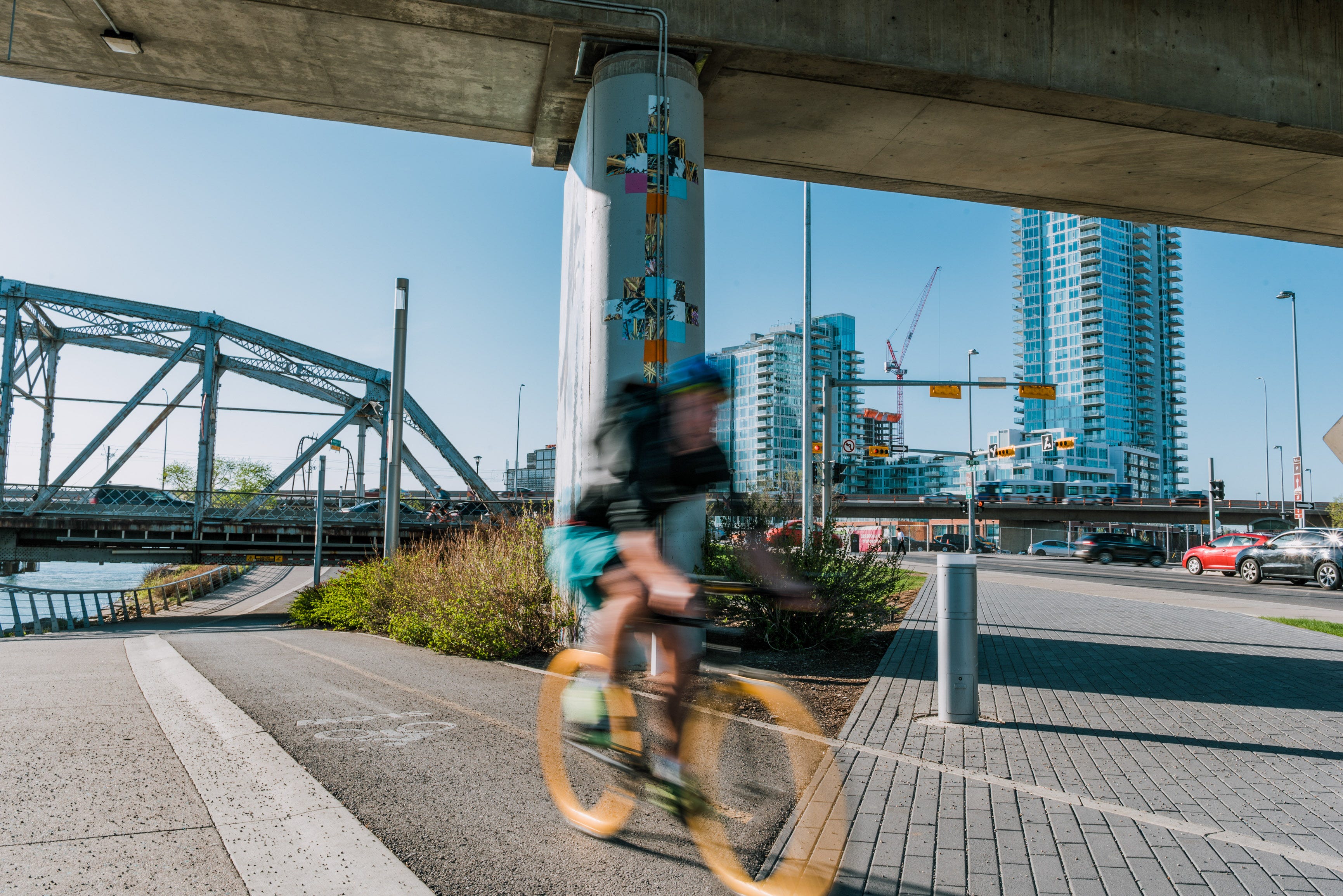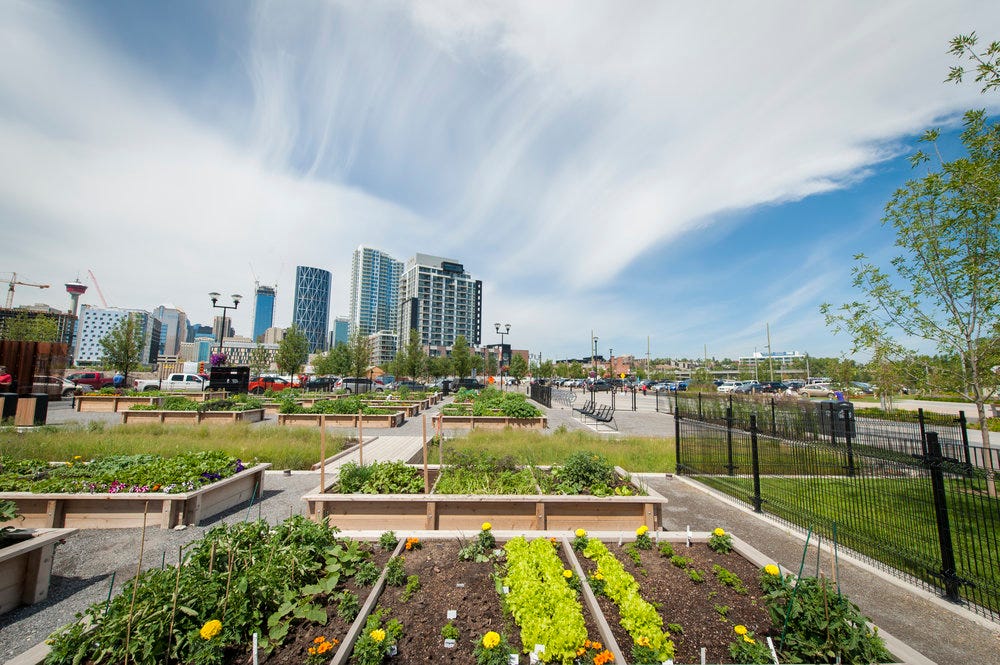The following was originally Councillor Farrell's Ward 7 News Nugget from Feb 23, 2021:

Calgary's East Village provides lessons and hope for our struggling Downtown core
I remember stepping over puddles of blood as I walked through East Village to City Hall nearly two decades ago. Blood, needles, and vomit were a regular sight when I lived in East Village’s Orange Lofts in 2003. I developed a habit of holding my cellphone as I walked the five minutes to and from work, always scanning my surroundings and ready to dial 9-1-1 on a moment’s notice. After late meetings, City security would walk me home at night.
To say the 550-metre walk between Calgary’s City Hall and Orange Lofts on 5th Street and 8th Ave S.W. has changed remarkably since 2003 is an understatement. Back then, the route passed by empty lots, boarded up buildings, and those who prey on Calgary’s most vulnerable citizens. The seniors who lived in the few existing towers were afraid to leave the safety of their block. Today, this area is home to the stunning National Music Centre and the restored King Eddy, new residential towers, and the dazzling Central Library. The opening of Orange Lofts in 2002 kicked off a transformation that’s changed Calgary’s oldest neighbourhood from a derelict part of the city into a vibrant community where more than 3,500 residents (and counting) live.

I’ve been thinking about East Village a lot lately, as I speak to the public and City staff about the future of Calgary’s Downtown. Downtowns are essential for the health of a city. They’re the cultural heart of a place, and because so much of our tax base comes from the core, a struggling downtown impacts the financial health of the entire city. Amid a multi-year recession, our Downtown was already struggling. Then the COVID-19 pandemic hit. Today, nearly one out of three office towers are empty and there’s a shadow vacancy rate (vacant space that is still paid for) of about another 10%. Calgary’s office core is undergoing the most profound vacancy crisis of any major city in Canada since the great depression.
And yet, instead of feeling despair, I feel hopeful about the future of Downtown. We have a once in a lifetime opportunity to build a downtown, and a Calgary, for the next generation. I know it won’t be easy but I know it’s possible. I know there isn’t one magic solution that will fix our core, but rather many changes that must occur. One only needs to look to nearby East Village for inspiration that a transformation is both possible and worth the hard work it will take.
If transforming our Downtown is a 10 on a scale of difficulty, East Village was a 100. Whether you’re tobogganing on St. Patrick’s Island, grabbing a coffee from the Simmons Building and strolling along River Walk, or hanging out at the Central Library, it’s easy to enjoy East Village while forgetting its checkered past.

East Village is located at the confluence of the Elbow and Bow rivers, and for thousands of years the area was an important gathering place for Indigenous peoples. By the 1940s, the district was known for its bootleggers and brothels and had been dubbed a “skid row” by Calgary’s Medical Officer of Health. Revitalization efforts were attempted, unsuccessfully, in both the 60s and 70s, and many gave up on the area. Social concerns long deterred private investment and the infrastructure crumbled. Built on an old landfill and tannery, the entire neighbourhood required environmental clean up. Utility replacement was desperately needed. A berm separated the river from the community, which also lacked connecting routes to the rest of the city. Much of the neighbourhood needed to be raised several meters out of the floodway.
It took more than a decade of hard work to build East Village into the funky neighbourhood Calgarians know today. A nearly $400-million public investment spurred nearly $3 billion of planned private investment. Transforming this neglected, forgotten area was a fight. I have the battle scars to show for it. But, gosh, was it worth it.
I believe we can, and we must, build a future city for the next generation, starting in the very heart of our city, our Downtown. And I believe the lessons learned while rejuvenating East Village must be applied as we build a downtown for people of all ages, abilities, and incomes to live, learn, work, and play.
Believe it can be done (think big!)
The first lesson? We must believe it can be done and push confidently past the naysayers. Throughout East Village’s transformation, I heard again and again, a sarcastic, good luck. I was told no one would visit St. Patrick’s Island because of the crime. Today, it’s one of the busiest parks in the city, where everyone feels welcome. When we chose the new site for the Central Library, many scoffed at the location – no one would visit 3 Street. S.E., they said. Some said it would be impossible to accommodate the C-Train in the building’s design. Not only does the Central Library have a train running through it, more than two million people visited the building in its first 14 months. There were a lot of doubters and only a handful of believers when we set to transform East Village. We listened to the believers.

Listen to Calgarians
We must also listen to the people who already live Downtown, many of whom are families new to Canada. We need to reach out to existing residents and ask them, what do you love about living here? What do you hate? What would keep you here? We need to ask Calgarians of all backgrounds and ages, from all areas of the city, what would entice you to live Downtown?
When the third and final attempt at revitalizing East Village began in the mid-2000s, an extensive market study took place. Calgarians were asked what it would take for them to live there. We heard they didn’t mind a little grit and they loved the tangible history. They told us they wanted to get around by bike, transit, and their own two feet – life without a car – a startling thing to hear at that time. They described desires for a vibrant public realm and said they cared about the river, parks, public art, live music, and neighbourhood eateries.

What did we do after hearing all that? We made it happen. After raising the land and replacing the infrastructure, the first big move was celebrating the river with RiverWalk. Sidewalks were widened, and new landscaping, streetlights, and benches were installed. We took an abandoned fish market and turned it into a temporary art centre. We staged yoga classes, street markets, and summertime opera to attract visitors. Council approved Calgary’s first parking-free condo building. We watched as condo sales increased every time a new piece of public art was unveiled. We saved historic buildings like the Simmons, St. Louis, and the King Eddy, which was dismantled brick by brick and then re-assembled.
Listen to youth
We absolutely must include youth in the conversation about our future Downtown. The 15-year-olds of today will be the 25-year-olds living in a revitalized Downtown a decade from now.
Listen to companies
We also need to consult future-oriented industries, especially tech. I keep hearing we can save downtown by just recruiting tech companies to move into cubicles, but the firms I talk to don’t want to work in a vertical office park. Many want to move to East Village because they love the neighbourhood feel. We need to ask them what would lure them Downtown.
Be creative about temporary space (think small!)
Adjacent to the King Eddy sits a colourful basketball court known as Bounce. This games park is temporary. It sits on a parking lot that two summers ago was home to a dozen neon painted shipping containers that housed retail pop-ups. Two summers before that, it was a gas station that sold tire gauges for makeshift crack pipes. From this gas station turned basketball court, to community gardens and dog parks, East Village has taken advantage of empty space and programmed it, creating attractions for visitors. Downtown should follow suit. Every vacant lot in our city’s core should have something cool on it to bring people Downtown, like temporary patios, skating rinks, and street markets. We need to give Calgarians a reason to visit.

And we need to give existing residents places to build community. When the East Village transformation started, many people who called the area home lived in deep poverty. We intentionally built amenities like playgrounds, dog parks, and community gardens where people from disparate demographics could come together. We were intentional about building a diverse neighbourhood and not displacing existing residents. The same must occur Downtown.

Invest in sidewalks and streets
If we want Calgarians to stay Downtown, we must invest in the public realm. That means parks, pathways, tree-lined sidewalks, and so on. Some parts of Downtown have the narrowest sidewalks in the country. Many are crumbling and in need of replacement. The lessons from East Village are clear. We must transform our core from a vertical office park into a place where people want to be. Think about the potential that exists in Downtown West, with the river just steps away.

We treat our core like a place to go through, rather than go to. For decades we’ve lamented that Downtown empties out after 5 p.m., yet its entire transportation system has been built for that quick exit. Cities around the world are humanizing their downtown streets to attract new residential, new talent, and new industries.

Let go of the past and offer incentives
Speaking of change, we must finally let go of the past. We’ve been lazy with our Downtown. We’ve waited for it to recover, because it always has. But times have changed. We know those office towers won’t fill back up with oil and gas companies. It’s also complicated and expensive to convert office towers to residential. They’ll sit empty if we don’t find a way to make conversions easier. We must look at financial incentives, tax holidays, and energy retrofits to spur development in our core. To attract private development in the East Village, we invested to show the area was worth exploring. Let this serve as inspiration.
What next?
We intentionally invested in that future for East Village nearly two decades ago. Transforming our core from a vertical office park to a vibrant neighbourhood will take the same intentional change. I recently stumbled upon old photos of East Village in the early 2000s. I gasped as I saw just how far this neighbourhood has come. When I walk through East Village today, it’s easy to forget the big fights, the sleepless nights and the sheer determination that it took to transform this place. Building a Downtown core that will welcome future generations won’t be easy. But East Village shows us it can be done and Calgary will be better for it.

I won’t be running for re-election this fall. It won’t be me championing our Downtown into the coming decades. We need bold leadership around the council table to ensure our Downtown is transformed into a true community where people will want to live, work, learn, and play for years to come. City-building is no easy task but, after 20 years around the council table, I can tell you it is worth it.
We need to build a downtown for all of Calgary. When the new Central Library opened its doors in 2018, I visited every day during its first week. I watched as Calgarians would enter the stunning atrium, pause, look around, and take it all in. I watched tears stream down faces. This space was theirs. It was built for them. East Village shows transformation is possible. It’s worth the hard work. We can, and we must, build a downtown that future generations will be proud of.

Cllr. Druh Farrell, Ward 7 City Councillor
Office of the Councillors
P.O. Box 2100, Stn. M
Calgary, Alberta, T2P 2M5
www.druhfarrell.ca
p. 403.268.4428 │ f. 403.268.3823 │ e. ward07@calgary.ca

.svg)